After an accident, navigating the legal process can feel overwhelming, especially when faced with unfamiliar terms. For accident victims in cities like Tampa, understanding basic legal terminology is essential when filing a claim and seeking compensation. Whether it’s proving who’s at fault or determining the amount of damages, having a grasp of these legal concepts can make a big difference in how smoothly the process goes.
This article will cover key legal terms that every accident victim should know, providing clarity and empowering you to handle your case more confidently.
1. Negligence
Negligence is one of the core concepts in personal injury cases. It refers to the failure of an individual to act with reasonable care, which leads to harm or injury to another person. In an accident case, the victim must prove that the other party was negligent in order to be compensated for their losses. For example, if a driver runs a red light and causes an accident, their action might be considered negligent.
Establishing negligence involves proving four key elements: duty, breach, causation, and damages. The negligent party must have had a duty to act with care- they breached that duty, their breach caused the accident, and the victim suffered damages as a result. Understanding this term is crucial, as proving negligence is often the foundation of a successful personal injury claim.
2. Liability
Liability is closely tied to negligence and refers to the legal responsibility for the accident. If a person is found liable, it means they are responsible for the damages caused by their actions or negligence. In personal injury cases, determining liability is one of the most critical steps in securing compensation for the victim.
For instance, a Tampa Personal Injury Lawyer can help victims determine who is liable for the accident by gathering evidence such as police reports, witness statements, and medical records. Multiple parties can be held liable in an accident, depending on the circumstances. This can include drivers, vehicle manufacturers, or even government entities if poorly maintained roads contributed to the incident.
3. Damages
Damages refer to the financial compensation an accident victim is entitled to receive after a successful personal injury claim. There are two main types of damages: economic and non-economic. Economic damages cover measurable costs, such as medical bills, property damage, and lost wages. Non-economic damages, on the other hand, compensate for intangible losses like pain and suffering or emotional distress.
For example, if someone suffers a severe injury in a car accident, they might be entitled to economic damages for hospital bills and rehabilitation costs, as well as non-economic damages for the physical and emotional toll the injury has caused. Accurately calculating damages is essential in ensuring the victim receives fair compensation for their losses.
4. Statute of Limitations
The statute of limitations is a legal deadline for filing a personal injury lawsuit. After an accident, the victim only has a limited amount of time to take legal action. This time frame varies by state and depends on the type of claim being made. In Florida, for instance, the statute of limitations for injury claims is typically four years from the date of the accident.
Understanding the statute of limitations is vital because missing this deadline can prevent an accident victim from ever pursuing compensation. A personal injury lawyer can help ensure that all necessary paperwork is filed in a timely manner, avoiding the risk of missing important deadlines.
5. Comparative Fault
Comparative fault is a legal principle that comes into play when both the victim and the other party are partially at fault for the accident. In states that follow a “pure comparative negligence” rule, a victim’s compensation may be reduced based on the percentage of their fault in the accident. For example, if a court determines that the victim was 20% at fault for the accident, their compensation would be reduced by 20%.
This rule ensures that even if the victim is partially responsible for the accident, they can still recover some compensation for their injuries. However, the amount they receive will be adjusted to reflect their level of responsibility.
6. Personal Injury Protection (PIP)
Personal Injury Protection (PIP) is a type of insurance coverage that comes into play in no-fault states. PIP ensures that, regardless of who caused the accident, victims can still receive compensation for medical expenses and lost wages. This can be particularly helpful in smaller accidents where proving fault might be difficult or unnecessary.
PIP generally covers a percentage of medical bills and lost income, but it doesn’t include compensation for pain and suffering. While PIP offers a quicker payout for immediate expenses, accident victims may still pursue a claim against the at-fault party if their damages exceed what PIP covers.
7. Settlement
A settlement is an agreement between the accident victim and the at-fault party (or their insurance company) to resolve the case without going to court. The majority of personal injury cases end in settlements, as they allow both sides to avoid the lengthy and expensive process of a trial.
In a settlement, the victim agrees to accept a certain amount of compensation in exchange for dropping the lawsuit. It’s important to carefully consider any settlement offers, as accepting one means you waive your right to pursue further legal action regarding the accident. A personal injury lawyer can help negotiate a fair settlement and ensure that the amount offered adequately covers the victim’s damages.
In conclusion, understanding these key legal terms can help accident victims navigate the complexities of personal injury cases. While these terms may seem overwhelming at first, working with a knowledgeable attorney can make the process much easier. Familiarity with these concepts allows victims to approach their case with confidence and make informed decisions about their legal options, whether they choose to settle, pursue arbitration, or go to trial.

